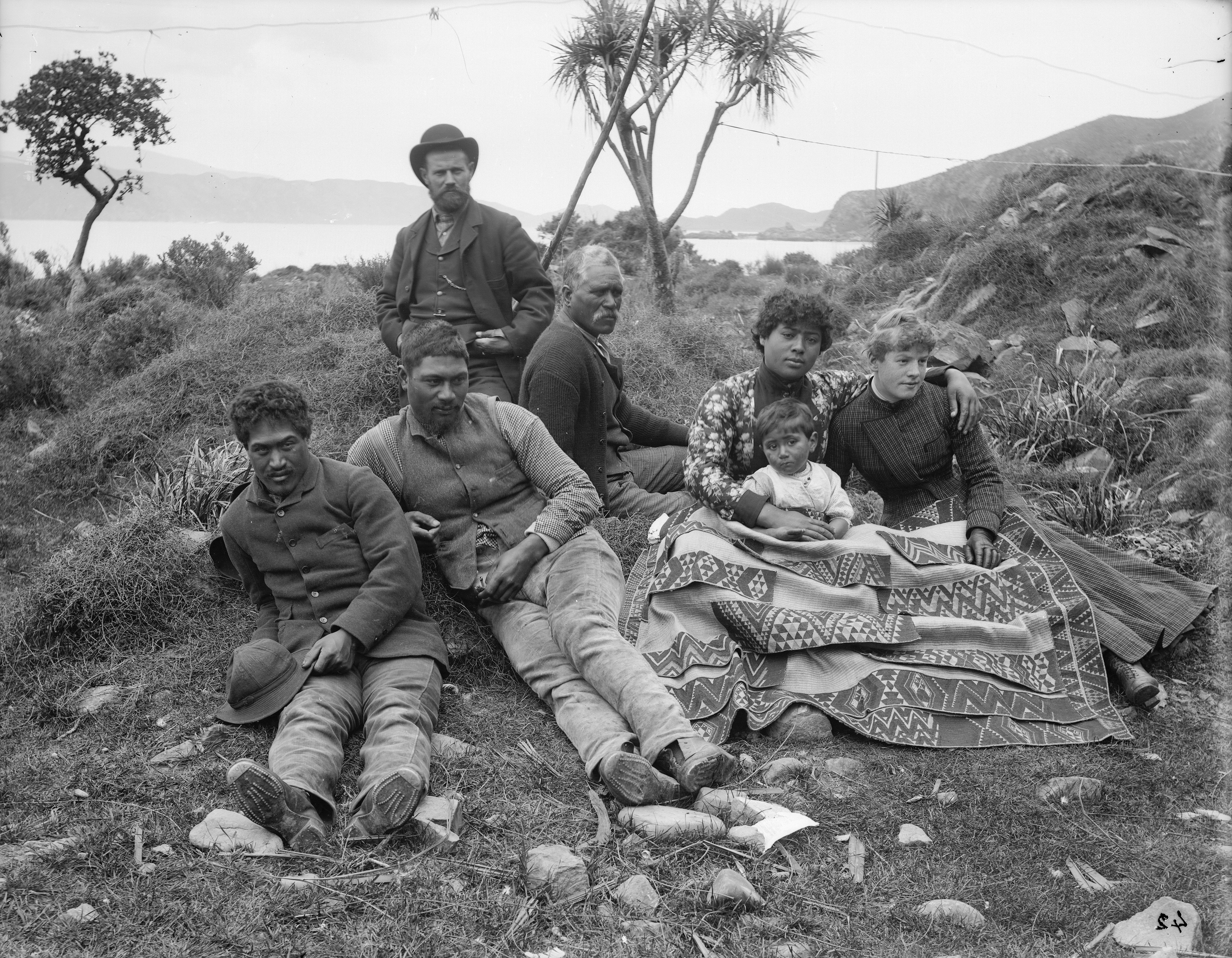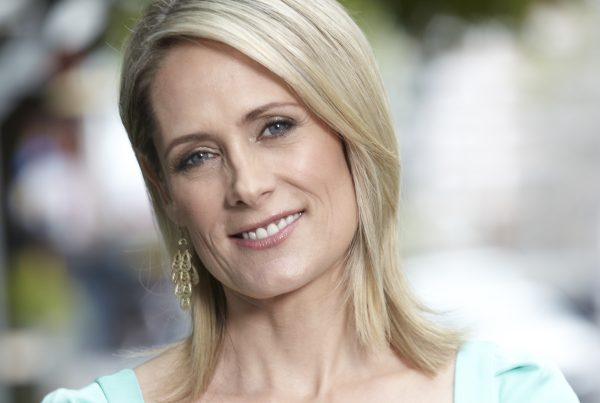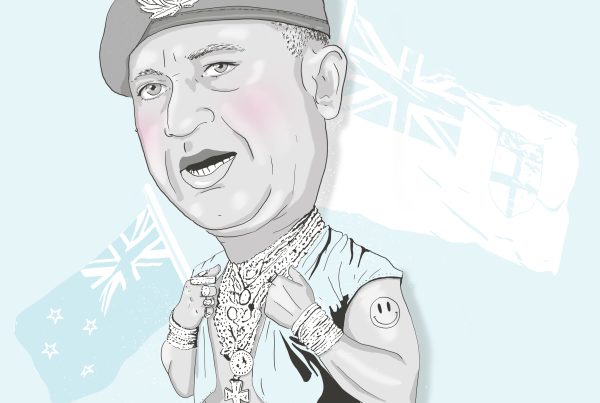
Little is known about the Karaka Bay Māori settlement. It is likely that some of the residents were related to Mata Te Naihi, the wife of the whaler and early Wellington pilot James ‘Worser’ Heberley. Karaka Bay, like the rest of the Miramar Peninsula, had passed into European ownership in 1840. Elsewhere in Wellington, as the Waitangi Tribunal Wellington Tenths report makes clear, Māori communities had been eased out of areas claimed by the new colonists. Karaka Bay, however, remained very remote from the town, with no road access and hardly any Pākehā homesteads.
Several other photographs of the Karaka Bay settlement show large gardens, and raupō shelters and houses. It was also a fishing base. In this photograph, Wright’s main interest is the women with the child, and her display for the camera of traditional kaitaka cloaks with very fine tāniko borders.
By the 1890s, the road, and commercial subdivision, had reached Karaka Bay. After the Seatoun Road Board received complaints from the new arrivals, the Māori residents were told that the keeping of pigs and the drying of fish were illegal “nuisances”. Very soon after, the Māori settlement was gone.
The photographer Henry Wright was a Wellington businessman of wide, and sometimes eccentric, interests, perhaps best known for his much-reproduced and much-derided 1902 pamphlet in which he urged “epicene women” to give up electioneering and instead “cook their husband’s dinners, empty the slops, and generally attend to the domestic affairs for which Nature designed them”. He was a gifted photographer, though, who created many striking images of Wellington people and landscapes. Much of his work was unknown until 1976, when 435 of his glass-plate negatives were discovered in the basement of a Newtown house and donated to the Alexander Turnbull Library.




